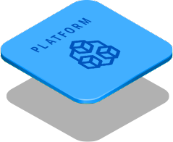Optimizing your licensing renewal processes is essential for government and public sector organizations. Efficient management not only ensures compliance but also lightens the administrative load. Traditional manual methods can be frustratingly time-consuming and prone to errors. Workflow automation is here to change that, streamlining your processes and boosting overall efficiency.
Imagine a system where repetitive tasks are handled automatically, reducing human error and freeing up your team for more important work. Automating licensing renewals lets you focus on strategic tasks that truly matter. In this blog, we'll explore the benefits and share practical tips for implementing workflow automation in your government licensing renewal processes.
Key Benefits of Workflow Automation in Government Licensing Processes
Workflow automation offers significant advantages for government licensing processes, enhancing both efficiency and accuracy. One of the primary benefits is the reduction of manual tasks, which can often be tedious and error-prone. By automating these tasks, governments can ensure that licenses undergo faster processing and with fewer mistakes. This not only improves the overall efficiency of the licensing process but also helps to maintain high standards of accuracy and reliability.

Another key benefit is the improvement in compliance and regulatory adherence. Government licensing processes are often subject to strict regulations and oversight. Workflow automation ensures that all steps in the licensing process are completed in accordance with regulatory requirements. Automated systems are also programmable to follow specific rules and guidelines, reducing the risk of non-compliance. This helps to protect public safety and trust in government operations.
Workflow automation also enhances transparency and accountability in government licensing processes. Automated systems provide detailed records of all actions taken during the licensing process. This makes tracking and auditing activities easier, ensuring that all steps are properly documented and can be reviewed if necessary. Transparency is also critical for maintaining public trust and ensuring that government operations are conducted fairly and ethically.
Lastly, workflow automation frees up valuable resources, allowing government employees to focus on more strategic and impactful tasks. Instead of spending time on repetitive manual processes, staff can devote their efforts to improving services and addressing the needs of their constituents. This shift in focus can lead to greater innovation and more effective public service delivery, ultimately benefiting the entire community.
Steps to Implement Workflow Automation in Government Licensing Renewal
Implementing workflow automation in government licensing renewal processes requires a structured approach to ensure smooth integration and optimal performance.
1. Assess Current Processes
Start by evaluating your current licensing renewal processes. Identify the steps involved, the stakeholders, and any bottlenecks or inefficiencies. Understanding the existing workflow is crucial for determining which areas will benefit most from automation.
2. Define Objectives and Goals
Clearly define the objectives you aim to achieve with workflow automation. These goals might include reducing processing times, increasing accuracy, ensuring compliance, or improving transparency. Having clear goals will guide the implementation process and help measure success.
3. Choose the Right Automation Tools
Select workflow automation tools that align with your specific needs and objectives. Consider factors such as ease of use, integration capabilities, scalability, and support. It's essential to choose a solution that can seamlessly integrate with your existing systems and grow with your requirements.
4. Map Out the Automated Workflow
Design the automated workflow by mapping out each step of the licensing renewal process. Identify which tasks can be automated and how they will interact with manual tasks. Ensure that the workflow is logical, efficient, and compliant with regulations.
5. Implement and Test the System
Once the workflow is mapped out, implement the automation tools and integrate them with your existing systems. Conduct thorough testing to identify and resolve any issues. This stage is crucial to ensure that the automated processes work correctly and efficiently.
6. Train Staff and Stakeholders
Provide comprehensive training for all staff and stakeholders involved in the licensing renewal process. Ensure they understand how the new automated system works and how to use it effectively. Training is vital for a smooth transition and to maximize the benefits of automation.
7. Monitor and Optimize
After implementation, continuously monitor the automated workflow to ensure it meets the defined objectives and goals. Collect feedback from users and identify areas for improvement. Regularly update and optimize the system to adapt to changing requirements and to further enhance efficiency and effectiveness.
Addressing Licensing Challenges with Workflow Automation
Workflow automation offers robust solutions to some of the most pressing challenges faced by government licensing agencies, particularly when dealing with high volumes of applications and complex regulatory landscapes. By automating key processes, agencies can handle an increased number of applications without compromising accuracy or efficiency. This capability is crucial during peak times when application inflows surge, potentially overwhelming traditional manual systems.

Moreover, workflow automation facilitates better resource management. By automating routine tasks, skilled staff can focus on more complex aspects of the licensing process, such as handling exceptions and providing personalized customer service. This not only boosts productivity but also allows for a more strategic allocation of human resources, which is essential for maintaining a high level of service quality.
Through these mechanisms, workflow automation directly addresses the scalability and adaptability challenges that licensing agencies face, ensuring they can efficiently manage both current demands and future growth. This strategic enhancement of capabilities significantly contributes to streamlined operations and improved regulatory compliance.
Integrating Workflow Automation into Existing Government Licensing Systems
Integrating workflow automation into existing government licensing systems requires careful planning and execution to minimize disruption to ongoing operations. The key to successful integration lies in a phased approach, where automation is gradually implemented in stages. This allows for continuous assessment and adjustment, ensuring that each phase aligns with the overall objectives and does not negatively impact current processes.
It is crucial to ensure that the new automation tools are compatible with existing IT infrastructure. This might also involve upgrading certain technologies or adopting middleware solutions that can bridge the gap between old and new systems. Data security is another critical aspect, as automated systems must adhere to stringent security protocols to protect sensitive information.
Effective communication is essential to facilitating change. Staff should be informed about the new system's benefits and workings through regular training sessions. It's also important to establish a support system to address any issues that arise during and after the transition. This helps smooth the adoption process and mitigate resistance from employees accustomed to the old ways of working.
By focusing on these strategic areas, government agencies can ensure a smooth transition to automated workflows, enhancing their licensing operations without major disruptions. This careful integration supports both immediate improvements and long-term operational sustainability, paving the way for more advanced uses of technology in public administration.
Optimize Your Licensing Renewal Now
Optimizing your licensing renewal processes through workflow automation can significantly transform government and public sector organizations' operations. Embracing this technology allows your organization to focus on more strategic initiatives, ultimately leading to better service delivery and increased public trust.
Ready to take the next step in revolutionizing your licensing renewal processes? Implementing workflow automation can be a game-changer for your organization. Contact us today to learn more about how our tailored solutions can help you achieve seamless and efficient licensing renewals.


